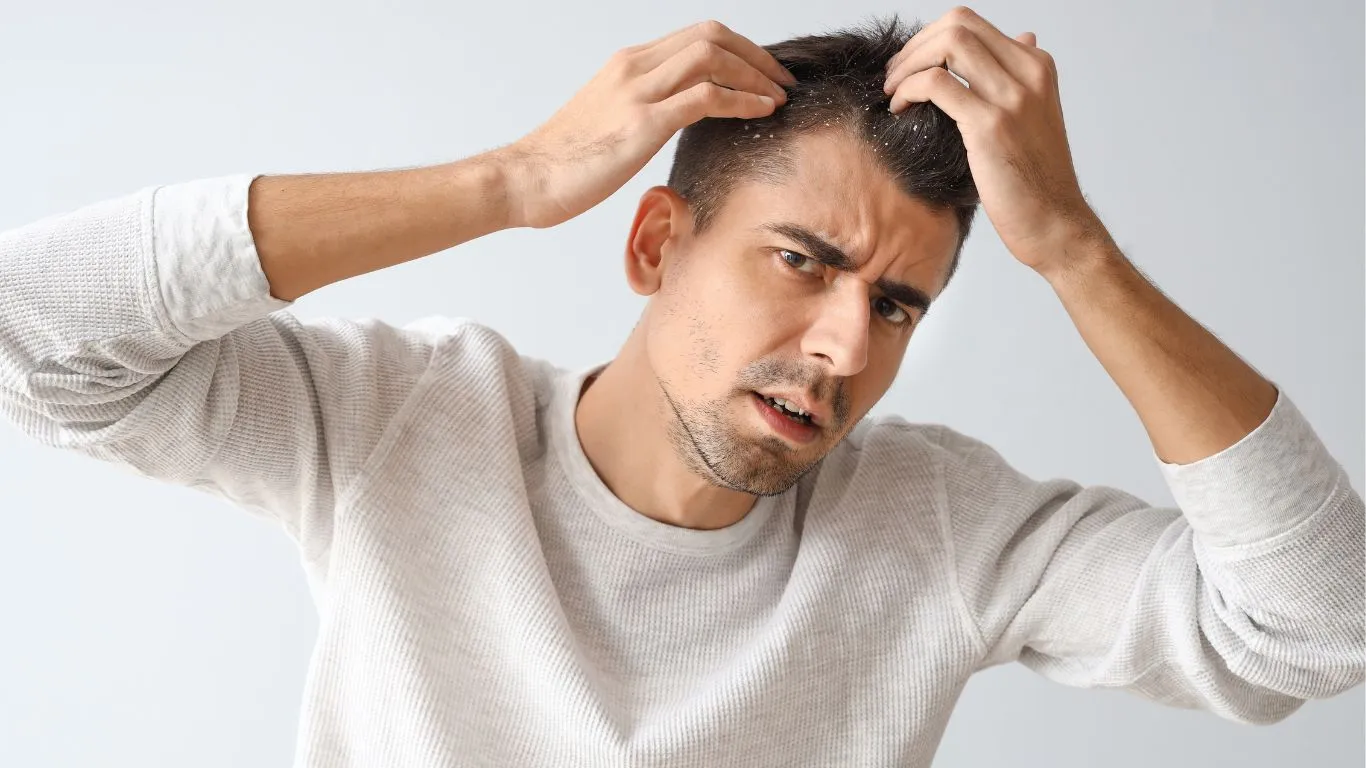Seborrheic dermatitis is a common skin disorder that often appears on the scalp as dandruff. It can also occur in other areas of the body, resulting in rashes.
Symptoms of Seborrheic Dermatitis
Symptoms of seborrheic dermatitis include:
- The presence of flakes on the scalp, which is one of the main signs, especially yellow flakes in infants.
- Scaly redness around the eyelids.
- Redness in folds and creases, such as under the breasts, in the genital area, and in the armpits.
- Thick skin known as pink plaques.
- Red scaly patches on the skin.
- Scaly patches along the hairline or chest, often appearing in ring shapes.
Read more: Atopic Dermatitis and Innovative Treatment Methods
Most Affected Areas
Seborrheic dermatitis typically appears in specific areas of the body, including:
- The scalp
- Behind the ears
- The face (including the forehead, brow area, nostrils, nasolabial folds, and around the mouth)
- Natural skin folds
- The trunk
- The creases of the arms and legs, underarms, and breasts.
In some cases, patches may appear in the genital area.
Causes of Seborrheic Dermatitis
The exact cause of seborrheic dermatitis is still unknown, but it is believed to result from several factors, including:
- Increased oil production in sebaceous glands.
- Genetic factors.
- Stress and fatigue, including anxiety.
- Harsh chemicals, strong detergents, and soaps.
- Cold, dry weather or seasonal changes.
- Immune system disorders.
Diagnosis Methods
It can usually be diagnosed by examining the affected area. Blood or urine tests or allergy tests are typically unnecessary. However, if the condition does not respond to treatment, a skin biopsy may be conducted to rule out other conditions.
Treatment
For infants, seborrheic dermatitis often resolves on its own by 8 to 12 months without treatment. Daily washing with a mild baby shampoo can help. If treatment is needed, the doctor may recommend washing the baby’s scalp daily with a specialized children’s shampoo and applying moisturizer gently.
For adults, while there is no definitive cure, several treatments can help manage symptoms. These treatments may need to be used long-term or intermittently during flare-ups.
It is important to note that symptoms may return after stopping treatment. Below are some treatments based on the location of seborrheic dermatitis:
علاج الاكزيما الدهنية في فروة الرأس
If you have seborrheic dermatitis on the scalp, your doctor may suggest the following treatments:
- Medicated antifungal shampoo: Contains ingredients like ketoconazole, selenium, coal tar, or zinc pyrithione. It is usually recommended to leave the shampoo on the scalp for 5 minutes before rinsing for optimal results.
- Corticosteroid gel or lotion: Usually prescribed for severe inflammation, itching, and flaking, but due to side effects like skin thinning, it should be used for short periods (up to four weeks maximum).
If seborrheic dermatitis continues to recur, your doctor may recommend using an antifungal shampoo once a week or every two weeks.
علاج الاكزيما الدهنية في الوجه والجسم
Treatment options for seborrheic dermatitis affecting the face and body include:
- Antifungal cream: Contains ketoconazole or another medication, requiring application once or twice daily for at least four weeks to control symptoms.
- Antifungal shampoo: May be used as a body wash.
- Corticosteroid cream: The doctor may prescribe this along with an antifungal to reduce inflammation. Use of corticosteroid creams should be limited to a maximum of two weeks.
- Medical ear drops: Used for seborrheic dermatitis inside the ears.
- Topical calcineurin inhibitors: Such as tacrolimus ointment and pimecrolimus cream. The doctor may prescribe these as an alternative to corticosteroids if you need long-term treatment for inflammation.
- Phototherapy: May be considered in severe cases.
References:
- Seborrheic dermatitis. (2024, May 1). Cleveland Clinic. https://my.clevelandclinic.org/health/diseases/14403-seborrheic-dermatitis
- Developers, B. (2023, March 10). Seborrhoeic dermatitis in adults. National Eczema Society. https://eczema.org/information-and-advice/types-of-eczema/seborrhoeic-dermatitis-in-adults/
- Seborrheic dermatitis. (2023, September 7). WebMD. https://www.webmd.com/skin-problems-and-treatments/seborrheic-dermatitis-medref#1-2

